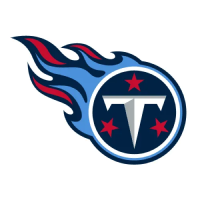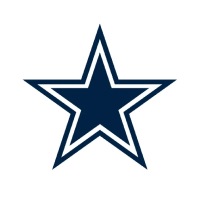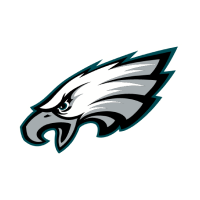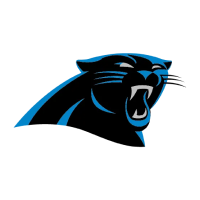Ignore the facade that is the Green Bay Packers’ back-to-back conference championship appearances and their window for a title is rapidly closing. Quarterback Aaron Rodgers is still Aaron Rodgers, but it’s hard to ignore durability concerns as he enters his 17th season under center. For a roster slowly depleting around him, general manager Brian Gutekunst enters arguably one of the most important draft cycles of recent memory.
In free agency, Green Bay laid quiet, almost too quiet, as Gutekunst focused the period on re-signing his own, instead of bargaining elsewhere. Running back Aaron Jones is back on a sparkling new five-year deal, however, it inevitably led to the departure of center Corey Linsley, and Jones’ backup Jamaal Williams, who now leave vacancies that must be occupied.
For an organization desperate for its fifth title, I focused on adding immediate starters with talent to produce from the moment they strap up. So, let’s get right to it. Using The Draft Network’s Mock Draft Machine, I looked at which prospects Green Bay could target in this post-free-agency draft haul.
Here is my seven-round mock including scheme fit on each prospect:
Round 1 (No. 29 overall): Terrace Marshall Jr., WR, LSU
The Davante Adams-Rodgers pairing is obvious, but who else do the Packers really have outside of No. 17 in their wide receiver's room? The answer, relatively, isn’t much with Allen Lazard and Marquez Valdes-Scantling, who could be improved upon with the addition of a ball-dominating wideout that would provide the added threat Green Bay desires for its Hall of Fame-bound quarterback.
With a prototypical frame, Terrace Marshall Jr.’s unique skill set will allow him to dominate from the onset of his professional career. Similar to Justin Jefferson’s rookie season in Minnesota, Marshall could compete for Offensive Rookie of The Year honors with eyes focused on Adams on the opposite side. Although development is needed as a blocker on the perimeter—a must-ask for Packers wideouts—he’s a sure-fire top-two wideout for the Packers who cannot be passed up here at the tail end of the first round.
Round 2 (No. 62 overall): Jabril Cox, LB, LSU
Back to the well here with another former LSU Tiger in Jabril Cox, who would immediately be tasked to accumulate starters reps as the anchor within the middle of Green Bay’s defense. Christian Kirksey was looked upon as an immediate plug-and-play following last year’s free agency cycle, but major deficiencies in his game were exposed leading to Krys Barnes’ debut at inside linebacker.
Cox is everything NFL teams look for in a modern-day linebacker with speed to cover in man, and a presence in the run game matched by only a few in his class. Newly hired defensive coordinator Joe Barry grabs the quarterback of his defense here in the second round that will inject life into a defense with youth-infused talent in abundance.
Round 3 (No. 92 overall): Benjamin St-Juste, CB, Minnesota
Gutekunst’s first selection as Packers general manager in 2018 was Jaire Alexander, a rangy athlete with elite processing and man cover traits out of Louisville. He dives back into the cornerback pool here with Benjamin St-Juste, a wiry backend prospect with ideal measurables as an outside corner at the next level.
Kevin King is still in town; however, I don’t see his role progressing following an abysmal postseason. We won’t revisit that, but St-Juste has the ability to start opposite Alexander from the get-go, and I don’t envision King outplaying him in camp.
Round 4 (No. 135 overall): Walker Little, OT, Stanford
With David Bakhtiari now fully healthy protecting Rodgers’ blindside, there has to be a sense of urgency to address the need opposite him following a failed attempt in free agency to do so. That may be a testament to Gutekunst’s outlook on a fairly deep tackle class, but moving forward with Simon Stepaniak and Billy Turner as the right side of Green Bay’s line isn’t an optimal scenario to place Rodgers under.
Walker Little slides nicely into the Packers’ vertical offense with unique vision traits that flashed on film with his identity to identify and counter twists and stunts. He needs work in the run game, but his anchor and heavy hands in the passing game denotes him as an easy selection here in the fourth round to immediately serve as head coach Matt LaFleur’s right tackle of the future.
Round 4 (No. 142 overall): Osa Odighizuwa, IDL, UCLA
The tandem of Kenny Clark at nose tackle and Kingsley Keke at right end offers Barry a nice foundation in his 3-4 front. Dean Lowry, however, serves best in a sub-package role in heavy fronts that Barry has mentioned he will deploy this upcoming season.
Osa Odighizuwa is a powerful prospect who fits Barry’s odd-front scheme to a T. He is light for the position at 267 pounds, but I envision him packing on 10-15 pounds of muscle to bolster his elite run game presence.
Round 5 (No. 173 overall): Jack Anderson, IOL, Texas Tech
Don’t let the round fool you, Jack Anderson will be a starter in the NFL for a long time. Anderson is one of my top interior linemen in this class and a flat-out mauler along the line; envisioning him in the December cold at Lambeau Field will be a sight to see. His power, agility, and excellent fluidity as an athlete have seen a nice rise on league-wide draft boards following the pro-day circuit. He’s another Day 1 starter that could fill Linsley’s shoes next to fellow rookie Little.
Round 5 (No. 178 overall): Elerson Smith, EDGE, Northern Iowa
I know, another edge defender with “Smith” across the back of his jersey, but Elerson Smith is too polished of a prospect to pass up late in the fifth round. With Preston Smith in need of a jolt, Elerson Smith would offer a nice push on the outside as a rotational player early in his career. Elerson Smith, a prototypical 3-4 edge prospect, is long (6-foot-6) with above-average mobility skills and lower half explosion. Progression is most needed in his foundational strength but he presents a nice project for Barry, who won’t be thrust into a major role in Year 1.
Round 6 (No. 214 overall): Jaelon Darden, WR, North Texas
The Packers have a quirk for non-Power-Five receivers. Adams (Fresno State) and Valdes-Scantling (South Florida) represent talents from “smaller” programs who’ve developed into featured wideouts for Rodgers. Jaelon Darden fits the script from North Texas and would provide a slot presence Green Bay simply does not have. Darden is a multifaceted talent who presents an additional weapon for Rodgers who has the ability to take it the distance each time he touches the rock; he’s a threat as a returner as well.
Round 6 (No. 220 overall): Josh Ball, OT, Marshall
The injury issues surrounding Bakhtiari can’t be ignored, and if he were to go down again it would present a massive issue for LaFleur’s unit which frankly can’t afford another season without its All-Pro tackle if it intends to be a contender come February. Josh Ball is an eventual starter at the NFL level with eye-popping size and excellent athleticism who, in an emergency, would provide outstanding depth if Bakhtiari were to go down.
Round 7 (No. 256 overall): Paddy Fisher, LB, Northwestern
Similar to last year’s seventh-round selection, Gutekunst again goes linebacker here, shoring up the second level of his defense with a tackling machine in Paddy Fisher. Fisher is a blue-collar, downhill style of prospect and built in the mold of former Packers linebackers Blake Martinez and Kyler Fackrell, who could carve out a nice role for himself simply due to his ability to tackle in the open field.
Filed In
Related Articles
NFL Draft
Arik Gilbert Doesn’t Need Big Workload To Be A Top NFL Draft Pick
- Aug 22, 2022
NFL Draft
2023 NFL Mock Draft: Marino 1.0
- Aug 22, 2022
Written By


































